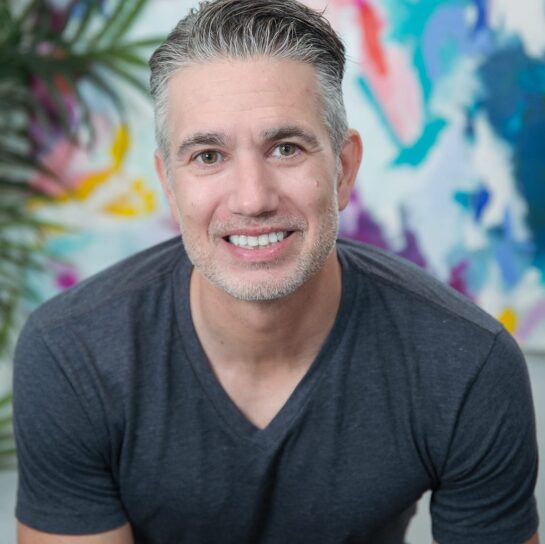Breaking the Marketing Mold: Bill Byrne Of Remedy PR On 5 Innovative & Non Traditional Marketing Strategies That Can Engage Audiences Like Never Before
An Interview With Chad Silverstein
Show the work. People love a great origin story. Give it to them.
Traditional marketing methods are no longer sufficient in today’s dynamic and fast-evolving market. To truly engage and captivate audiences, businesses need to think outside the box and adopt innovative and non-traditional marketing strategies. What are these strategies, and how can they transform audience engagement? I had the pleasure of interviewing Bill Byrne.
Bill Byrne is co-founder and managing director of Remedy Public Relations (www.remedyPR.com). For close to 25 years Bill has helped challenger brands and underfunded startups compete rise up through PR programs that deliver results. His early career involved working with a who’s who of global names, including Sony, Burton Snowboards, Intel, Old Spice, and Guinness Import Company. His work with Remedy PR is similar, touching on the active-outdoor industry, fitness, consumer tech, finance, emerging tech, CPG, and wellness.
Thank you so much for joining us in this interview series! To start, could you share when and how you got started in marketing?
Sure, and thanks for having me. I graduated college with a degree in advertising, but a recruiter for a major PR company saw that I ran the snowboard club at Ithaca College. This was the late 90s and snowboarding was not what it is today. Having that extracurricular on my resume led to being asked to join a PR firm that had just signed Burton Snowboards, the leader in their space. As a part of that firm, I was fortunate enough to work with some major names in tech, CPG, and the consumer space, which helped inform my career path later. Let this be a lesson to anyone writing their resume now… you want to add some color!
What has been the biggest shift in the marketing industry and can you give us an example of how it impacted you?
It’s a long and short game in PR and editorial, even with digital media. Brands want results overnight, and while sometimes that does happen it’s not the norm these days.
I often say my worst client is one that has had previous success in PR, because they don’t want to admit that the landscape has shifted and what worked last week may not work tomorrow.
Can you explain why it’s essential for businesses to break away from traditional marketing and embrace new strategies?
Traditional marketing can still work, but it’s often not as effective as it used to be. Sometimes it is.
The idea of what’s traditional shifts. It’s shifting right now. The traditional performance based online ad model, with brands paying to be in your social media feed, isn’t as effective as it used to be. It’s shifted to be a top of the funnel thing, and brand managers are freaking out that it’s not working like it used to.
Could you share and briefly explain the first major change you made to break the trend of traditional marketing that was not so common?
I remember it well. I was working at Cohn & Wolfe Public Relations in Manhattan in the late 90s. In addition to working with Burton Snowboards, LG Electronics, and Sony, Intel was a client. Native web-based media was just emerging as a news property. For one of Intel’s science competitions, I had the idea of shifting the narrative. Instead of having a journalist interview a winner from their high school Science Talent Search competition, we pitched the Slate editors on having a student write a multi-day a diary about their experience. Slate was into it. Intel was into it. It was a win-win.
What specific results did you see after implementing this change?
While the older demographics at the time were just starting to be comfortable with digital-first news sources, the younger generations we already on board. Having a high school student be featured in the first person in what was one of the leading media outlets at the time positioned a scholastic science competition, what most would consider somewhat stodgy, as a forward thinking program.
How do you ensure that these new marketing strategies resonate with your target audience?
It has to be authentic to resonate. Authentic for the brand, but more importantly, the target.
We need to stop using the word consumer and get back to calling the audience a customer. The goal is to be where they want to be, and place content, whether it’s advertising, influencer driven or editorial, in places they want to be.
Can you share an example of something you tried that didn’t deliver expected results or ended up ended up becoming a financial burden, and what you learned from that experience?
I never fail! Kidding… I fail all the time. I’ve been guilty in the past of confusing myself with the customer and journalists we’re targeting in PR. One particular instance that comes to mind, while it didn’t work well, still brings a smile to my face.
Surface Suncare was the first sunscreen brand to have a CBD sunscreen that you could buy online. Before that, because of outdated regulations, you had to place the order online and then they’d have to call you to take your credit card. I’m a big CBD user, and we’ve done a lot of work in the CPG space, so I thought this pitch would strike gold with journalists.
Turns out those of us in California were a bit ahead of the trend with CBD. More than a few longtime journalist contacts wrote to us asking why so many are into CBD. It just wasn’t as popular in other parts of the country. One actually sent me an email saying, “Billy… WTF is with you Californians and this CBD stuff? This is the fifth email on CBD I’ve gotten this week.”
While CBD is common now, this project was too ahead of the trend to be successful at the time. I confused my personal love for it with what was happening in the media.

Great. Now, let’s dive into the heart of our interview. Could you list “5 Innovative & Non Traditional Marketing Strategies That Can Engage Audiences Like Never Before”?
1. AI is the reason brands need to double down on public relations and earned media. There’s already been deals made with publishers and the leaders artificial intelligence powerhouses. People don’t Google search ads for advice, and neither does your favorite AI tools already are pulling information from the top news sources. Not ads.
2. Show the work. People love a great origin story. Give it to them.
3. Adopt a scarcity model in product releases. Create less products so that they sell out instead of becoming discounted in three months.
We’ve trained the customer that it’s ok to wait for sales and discounts are readily available. Memorial Day sales, Black Friday, Yellow Wednesday, and a discount for following a brand on TikTok all need to cut back.
4. Brands need to give back to their customers through social media. Gym facilities understand this. Dog groomers understand this. But few others seem to have embraced it.
5. Interested in getting guerilla? Brands shouldn’t be afraid of swiping right, or going where only fans go. There’s a lot of opportunities with non-traditional apps for marketing content and new products.
What challenges might companies face when transitioning away from traditional marketing strategies, and how can they overcome them?
Brands need to realize that their KPIs are there’s alone. The customer, and the journalists we target in PR, don’t care if something is on-brand as much as they want a great story and product that matches. Authenticity comes from quality as much as it does narrative.
How do you measure the success and ROI of these new marketing strategies?
That’s a difficult question. Immediate sales are what brands want to hear, but those days are gone. As are frequently attributable purchases. Performance ads aren’t delivering short-term ROI. It takes time to measure and brands, except for the latest hotshots, need to be ok with incremental growth.
Looking forward, how do you see the role of innovative marketing evolving in the next 5–10 years?
Brands need to mix their efforts with the now and experiment with the next. If you put all your effort into what’s working and don’t focus on evolving strategies and tactics, you’ll be left behind when the world moves on.
What advice would you give to business leaders who are hesitant to move away from traditional marketing methods?
Brands lose relevance regardless of how great their products are. Even the hottest brands fade if they don’t maintain relevance.
Can you share any upcoming initiatives or plans you have for further innovating your marketing strategies?
I can’t give away any secrets, but as a company, we’ll be giving on an excessive level.
How can our readers follow your work and learn more about your approaches to modern marketing?
I’m very active on LinkedIn, so that’s probably the best place (https://linkedin.com/in/billbyrne). The Remedy Public Relations Instagram (https://www.instagram.com/remedy_pr/) and my personal feed (ttps://www.instagram.com/the_byrnenotice) are good places too.
This was great. Thank you so much for the time you spent sharing with us.
About the Interviewer: Chad Silverstein, a seasoned entrepreneur with over two decades of experience as the Founder and CEO of multiple companies. He launched Choice Recovery, Inc., a healthcare collection agency, while going to The Ohio State University, His team earned national recognition, twice being ranked as the #1 business to work for in Central Ohio. In 2018, Chad launched [re]start, a career development platform connecting thousands of individuals in collections with meaningful employment opportunities, He sold Choice Recovery on his 25th anniversary and in 2023, sold the majority interest in [re]start so he can focus his transition to Built to Lead as an Executive Leadership Coach. Learn more at www.chadsilverstein.com
Breaking the Marketing Mold: Bill Byrne Of Remedy PR On 5 Innovative & Non Traditional Marketing… was originally published in Authority Magazine on Medium, where people are continuing the conversation by highlighting and responding to this story.
